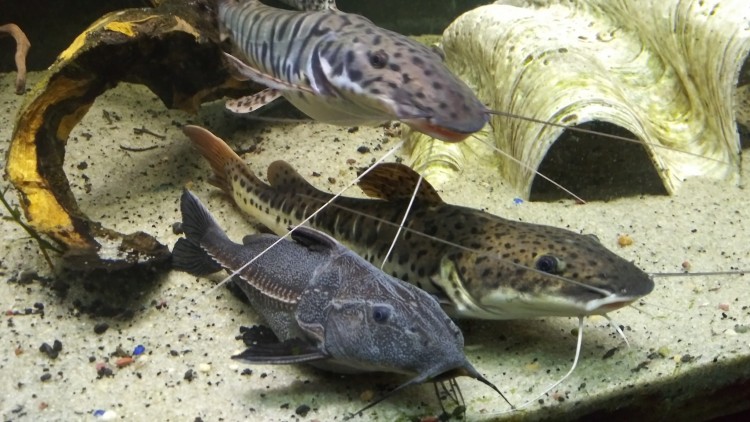Keeping Catfish in Aquariums
- Feb 03, 2020
- PalaciosAn
- 8886 0 0

As you consider your livestock choices for your freshwater aquarium, eventually, you will look into freshwater catfish. A freshwater aquarium will provide countless hours of joy for you and your family. When considering your species options, you will quickly realize one of the best types of fish to include in your aquarium would be a catfish. Catfish come in a wide range of personalities from peaceful to aggressive, so there is a catfish that fits your aquarium needs.
Freshwater catfish will spend most of their time hanging out near the bottom of the aquarium, looking for food and hiding among the rocks and the tank decorations. Of course, there are many different species of catfish, and not all are created equal.
Here are just a couple common catfish species found in the freshwater aquarium hobby:
Redtail Catfish
One thing you quickly learn about the redtail catfish is that they are not a species for beginners. In the wild, redtail catfish follow the typical habits of predatory species found in the Amazon river, the South American jungles, and other large rivers and streams throughout the world. This catfish will start out measuring just 2 inches (5 centimeters), but will quickly outgrow most common aquariums. If you are going to keep a redtail, keep in mind that you will need a tank that is at least 1,000 gallons. You may be able to pick one up reasonably small, but they do not stay small for long. Freshwater redtail catfish will eat just about everything in sight that will fit in his mouth, including smaller fish.
The redtail catfish tank environment will need to keep sparsely decorated and be careful about tank mates. Perhaps not surprisingly, most aquarium hobbyists find that redtail catfish will live a better life in an outdoor pond rather than an aquarium. There are many outdoor pond kits that will allow you to build the ideal environment for your redtail. The bad thing about the pond is how catfish stay hidden most of the time once you place them in the pond. They will be hard to find.
African Giraffe Catfish
Unlike the redtail species, giraffe catfish are much easier to care for in an aquarium. This is because they have a more peaceful temperament, and they aren't a fussy eater. The very fact that they won't eat anything and everything in sight like the redtail species means you have more options for tank mates. However, even in captivity, they can get quite large. Commonly growing over two feet in length.
Additionally, they would also do well with a sparsely-furnished tank, but for a different reason, their large size means they tend to knock things over often. They will need a balanced diet to keep their immune system strong. If you are interested in getting an African giraffe catfish, you will need at least a 220-gallon sized tank or larger.
Harlequin Lancer Catfish
The Harlequin Lancer Catfish can be easily distinguished by their bright colors and their metallic sheen. They are native to Indonesia, and they often only grow to about a foot long. The Harlequin Lancer will usually hide within the rocks in your aquarium during the day, but they have a hearty appetite. You can feed them fish flakes, pellets, or even live feeder fish. They can survive in a 30-gallon tank when they are below 3", but after they get bigger, they will require at least a 60-gallon tank or larger. The harlequin lancer catfish species do well in a planted tank, and gravel sub straight that is no more than a 1/4" thick. Otherwise, uneaten food will get stuck in the gravel and could contaminate the water.
Borneo Glass Catfish
The Borneo Glass Catfish gets its name from the fact that you can see through their body, catching a glimpse of their vital organs in the process. This catfish species requires a calm and balanced aquarium atmosphere; they need to be in a situation where they feel like they are still in a river or stream rather than an aquarium. Even though they only grow to five inches, they are still classified as catfish because they have the whisker-like barbels on their cheeks. They require pristine water conditions in your aquarium to remain healthy. The ideal living environment for Borneo glass catfish is a temperature between 75-80 F, a hardiness scale of KH 8-12, a PH scale between 6.5-7.0, and moderate water flow.
Which catfish should you choose? It's all up to you and your personal preference. There is no question that these are all exciting choices, and these are only a few freshwater catfish from many.







About author
I have been in the hobby for a while, my main focus is automation. I am interested in doing aquaponics in 2018.